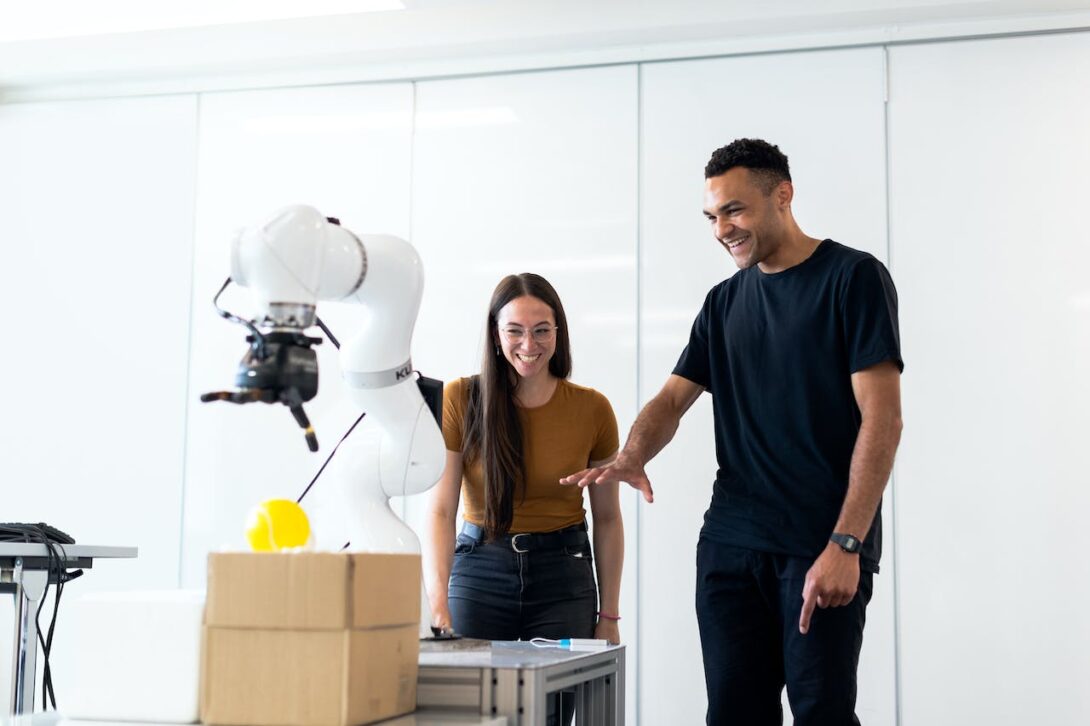The whirring hum of a robot arm weaving intricate designs into metal whispers of a future fundamentally reshaped by automation. Once confined to the realm of science fiction, robots are rapidly integrating themselves into the fabric of our lives, from automating tedious tasks in factories to performing delicate surgeries with unparalleled precision. While their transformative potential across numerous sectors is undeniable, a crucial question lingers: are we prepared to navigate the labyrinth of progress they present?
Benefits Beckoning at the Crossroads:
Robots offer a dazzling array of potential benefits, promising to reshape entire industries. In the **industrial landscape**, they tirelessly undertake arduous tasks, minimizing human exposure to hazardous environments and enhancing production efficiency. Imagine factories buzzing with automated assembly lines, where robots collaborate with human technicians to ensure seamless operation and near-zero error rates. The **medical field** witnesses robots performing minimally invasive surgeries with unmatched precision, offering hope for improved patient outcomes and quicker recovery times. Imagine robots assisting surgeons during intricate procedures, providing real-time data and guidance, ultimately saving lives and alleviating human suffering. Robots can even become **companions for the elderly or disabled**, providing assistance with daily tasks, fostering social interaction, and offering much-needed companionship.
Shadows Lurking Within the Light:
However, this transformative march forward is not without its shadows. The specter of **job displacement** looms large, particularly in sectors heavily reliant on manual labor. While automation undoubtedly enhances productivity, it may threaten to render specific skillsets obsolete, potentially exacerbating social inequalities and economic unrest. The specter of **autonomous weapons** raises chilling ethical dilemmas, blurring the lines between battlefield efficiency and indiscriminate destruction. Imagine armed drones making life-or-death decisions without human oversight, raising disturbing questions about accountability and the sanctity of human life. **Privacy concerns** surface as robots collect and analyze vast amounts of data, potentially creating a panoptic society where every move is monitored and analyzed. Finally, the question of **control and accountability** remains paramount. Who bears responsibility for the actions of autonomous machines? In the event of an accident or malfunction, who is held accountable? Navigating these complex issues necessitates a nuanced approach, one that acknowledges the potential downsides while harnessing the immense potential for good.
Building Bridges: Humans and Robots, Hand in Hand:
Instead of envisioning a dystopian future of robotic overlords, a more promising path lies in fostering **human-robot collaboration**. We must view robots not as replacements, but as **amplifiers of human capabilities**. Imagine surgeons collaborating with robots during intricate procedures, leveraging their combined precision to provide exceptional patient care. Envision teachers utilizing robots to personalize learning experiences for each student, catering to individual needs and fostering deeper engagement. By embracing this collaborative spirit, we can tap into the immense potential of robots while mitigating their potential downsides. Imagine robots assisting construction workers in building safer and more sustainable infrastructure, or collaborating with scientists in laboratories to accelerate scientific discovery. The possibilities are truly endless.
The Map to Responsible Innovation:
Reaching this collaborative future requires a multi-pronged approach. **Education and training** are crucial, equipping individuals with the skills to thrive alongside robotic colleagues. We must foster a culture of **responsible innovation**, guided by robust **ethical frameworks**. Establishing clear **regulations and governance** regarding data privacy, robot safety, and accountability is essential. This collaborative approach, where humans and robots work together with mutual respect and understanding, will pave the way for a future where technology empowers, not disenfranchises.
Unfurling the Scroll of the Future:
The future of robotics is a fascinating yet intricate tapestry still being woven. While uncertainties persist, by acknowledging the challenges, harnessing the benefits, and fostering responsible innovation, we can ensure that robots become partners in progress, not harbingers of dystopia. The journey will be complex, demanding foresight, collaboration, and a commitment to ethical principles. But the potential rewards – a future where robots alleviate human burdens, amplify our capabilities, and contribute to a more equitable and sustainable world – are undoubtedly worth pursuing.
Key Questions to Ponder:
* How can we create a **future of work** where both robots and humans flourish, ensuring a just transition and reskilling opportunities for displaced workers?
* What educational and training initiatives are needed to equip individuals with the technical and critical thinking skills needed to thrive in a robot-infused future?
* How can we ensure that **ethical considerations** are embedded throughout the entire lifecycle of robot development, deployment, and use?
* How can we foster **international collaboration and dialogue** regarding responsible robotics development, ensuring ethical standards are upheld globally?
* What role should **governments and regulatory bodies** play in shaping the future of robotics, striking a balance between innovation and responsible development?
* How can we encourage **public engagement and discussion** regarding the potential impact of robotics on society, ensuring transparency and building trust?
This expanded version dives deeper into the potential benefits and challenges of robotics, emphasizing



